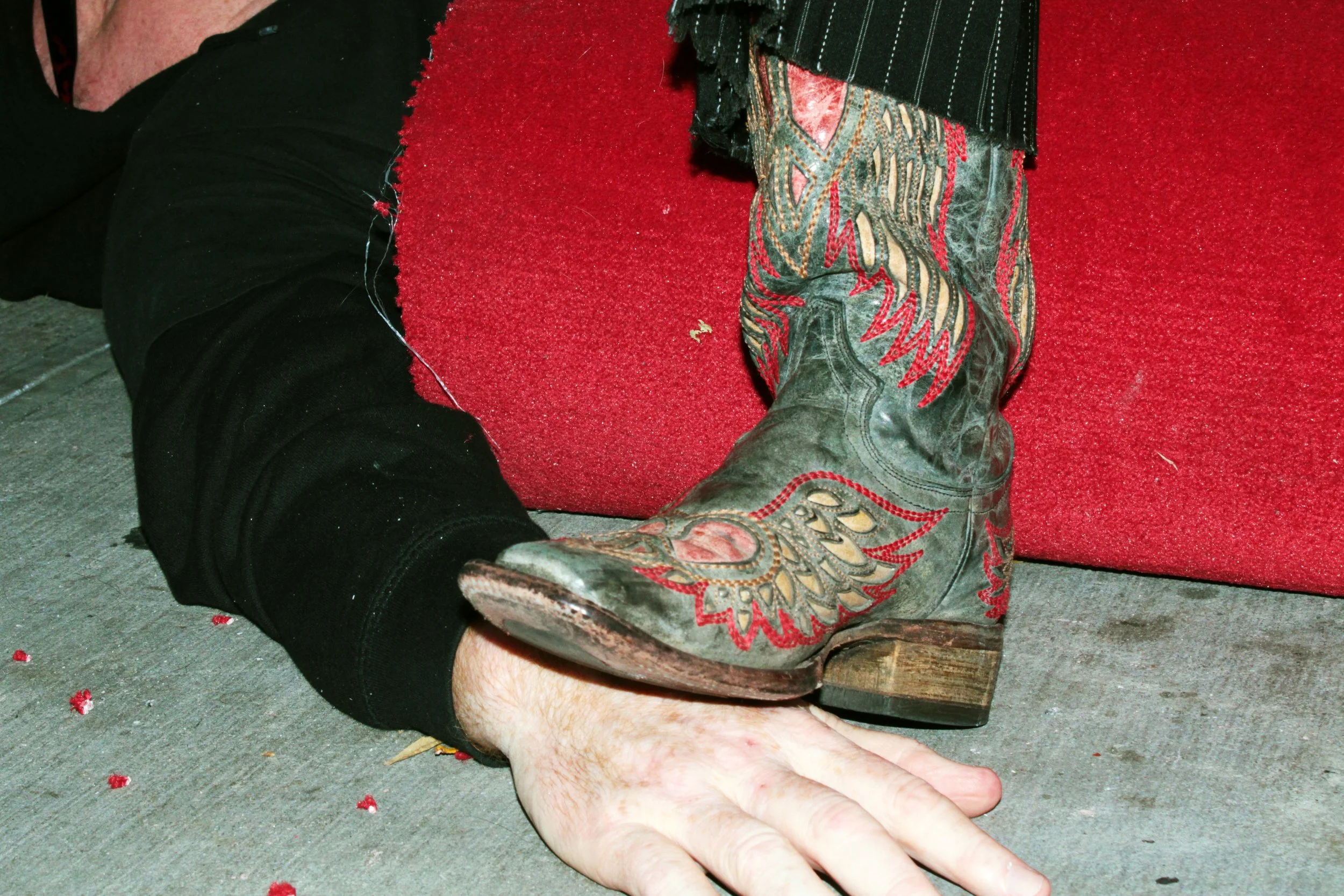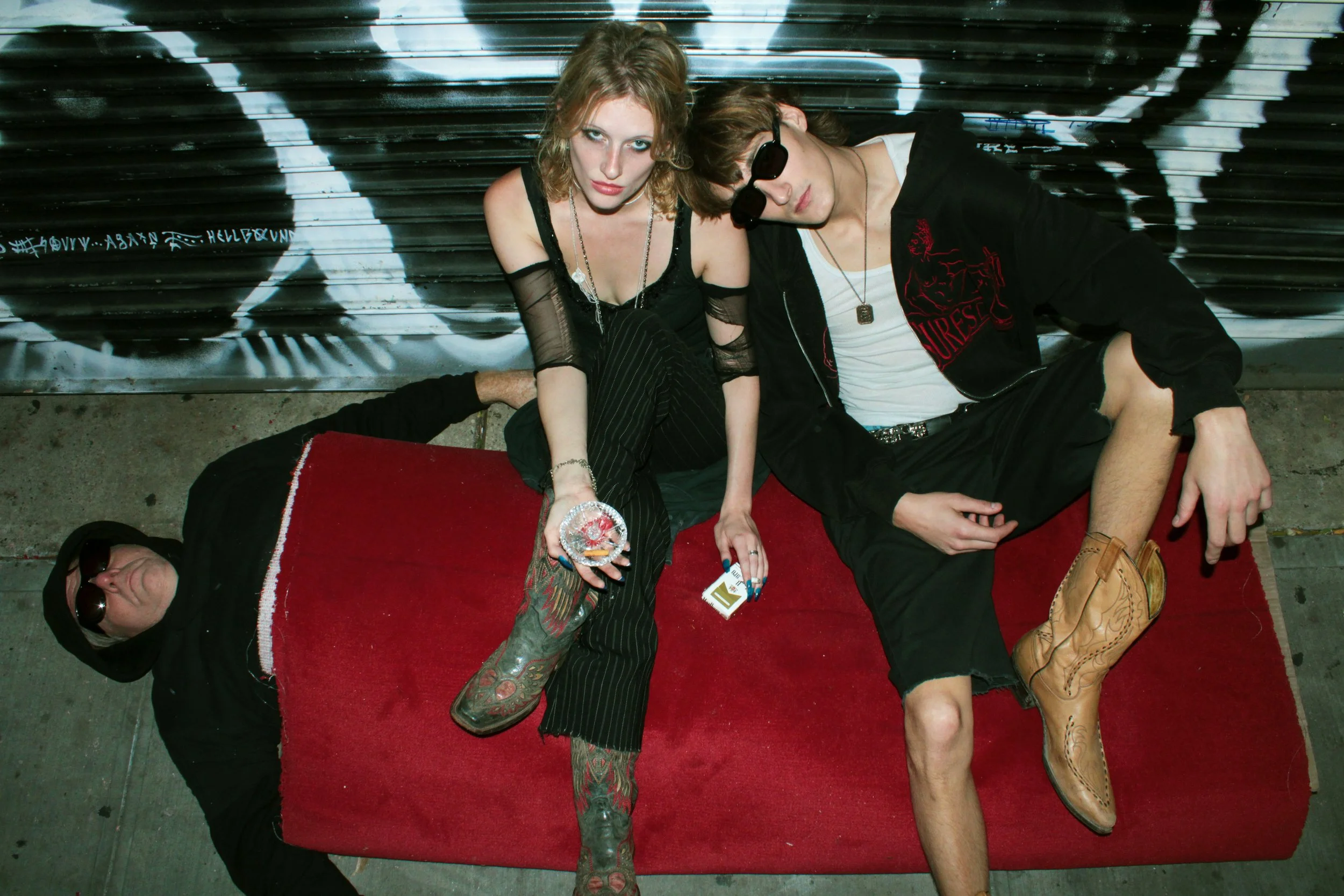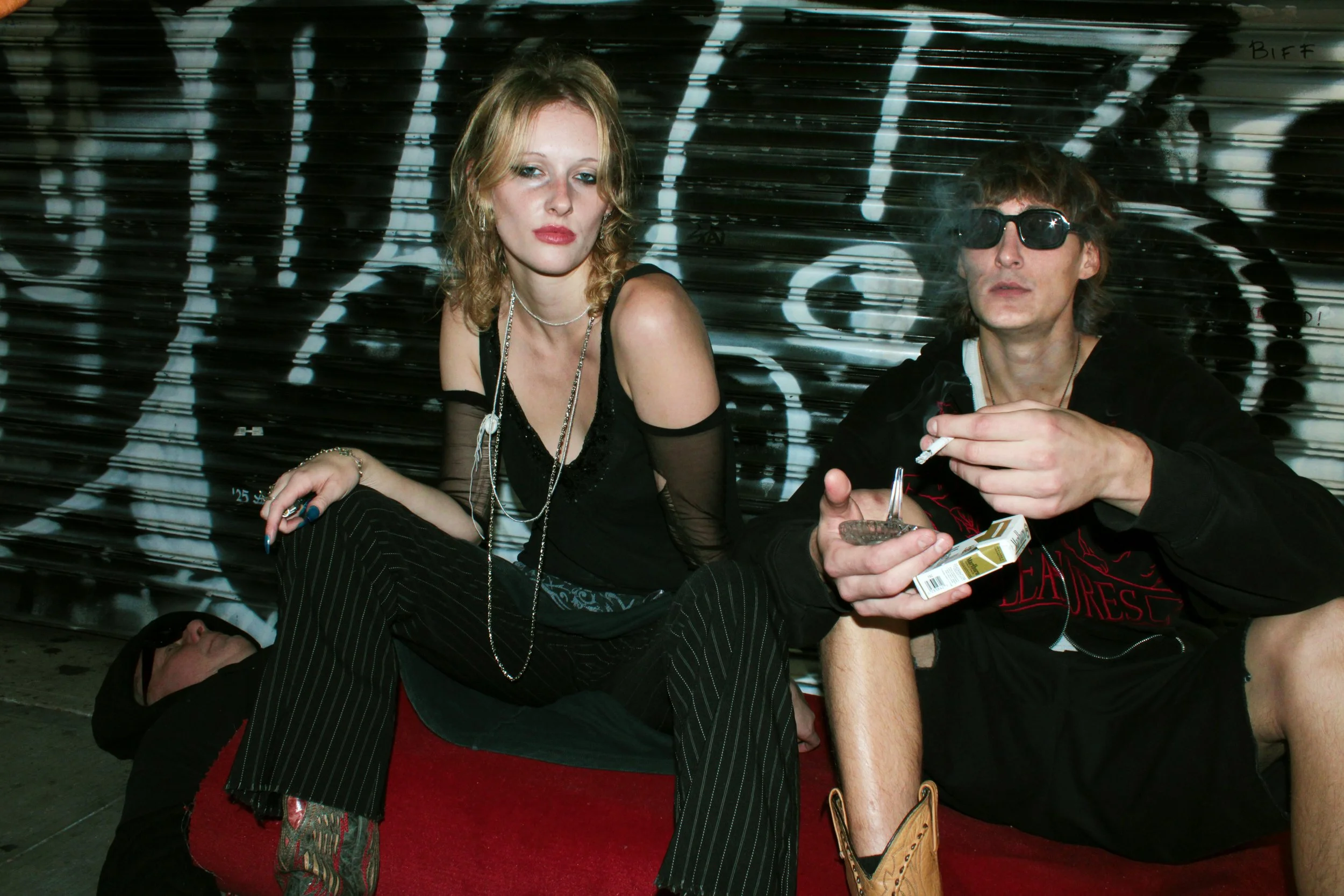It’s Not A Party Without Kevin Carpet: An Interview
Article by Mollie Smith, Photo by Katey Cooney.
It took less than five minutes for a crowd to form around Kevin Carpet on 2nd Avenue, directly across from B&H Dairy at 3 pm on Sunday.
Mr. Carpet’s notoriety within the New York club scene cannot be understated. Since the 80s he’s made a name for himself by gracing the corners, doorways, and dance floors of New York’s hottest clubs, bars, fashion shows, and even cross-streets. What allegedly started as a government grant-funded performance art piece at 18 quickly evolved into a lifelong passion. Kevin credits carpeting with a lifetime of fun experiences in and out of clubs — and with a zen state where he describes himself as becoming “one with the floor.”
Although he’s been carpeting for almost 30 years, the last few years have brought him equal parts fame and infamy. If you haven’t seen Kevin Carpet on the floor at Basement, you’ve probably seen him on your Instagram or TikTok feed. He says the negativity when he first went viral a few years ago almost made him quit, but that the positive fan response he’s gotten has kept him going, despite the changing New York nightlife scene. Within seconds of him entering his carpet on the sidewalk of 2nd Avenue, it was clear that he wasn’t exaggerating his fame within the city. A throng of impassioned British tourists began to take photos whilst they waited for their Bubble Tea; a French vlogger interrogated our staff about the meaning of performance art, and among all of it, several people came up to talk to Kevin specifically. He high-fived them.
We sat down with (and on) Kevin Carpet to talk about carpet rivalries, viral videos, and the slow death of nightlife in the internet age. After all, in his own words, it’s not a party without Kevin Carpet.
Mollie Smith: I feel like you’re such a figment of the New York scene — are there any people you’ve met who you’ve been surprised already knew who you were?
Kevin Carpet: Oh, yes. A lot of fashion brands and people — like Alexander Wang, Adidas, and Doc Martens. They’ve all wanted to use me in fashion shows, and even just events on the street.
MS: Have you had funny encounters with people that came to events just to see you in-carpet?
KC: Yeah, and a lot of events they say I’m coming to promote it, in part. A few people throughout the years have been known to say “It’s not a party without Kevin Carpet.”
MS: I mean, I believe that! What are your thoughts on your carpeting rivals in New York? What’s a misconception you think people have about the carpet?
KC: That’s a weird thing, because we’re actually friends. People post on Google and Tik Tok saying we’re rivals, but when we see each other it’s much more like, “hey, how are you?” Carpet rivals sells on the internet, but when I see him it’s nice. Giorgio and I don’t do many parties together though because he’s more into the fetish scene and has lots of signs that say “Women, step on my face in heels” and I obviously don’t like that.
MS: Why have you continued to do it despite accusations of it being a fetish act?
KC: People are going to say whatever they want. When the fans start being less and the haters more, I might stop. But even now, after all the videos of me that went viral, there are still a lot of positive comments, too.
MS: Yeah, I feel like there is an appeal in it being sort of taboo, especially with young people.
KC: The other day on X, someone wrote, “Oh my god, the younger generation just found out about Kevin Carpet”. When I first started doing this in the 80s, I did this because I got a government grant, and that’s why I was doing it on the street in the beginning. It was supposed to be a piece where I was used as an object and wrote about it. I didn’t feel any pain and I didn’t feel any joy — it was just fun to hear the conversations around me. I will say that after it was done, I was so relaxed for the next few days that it felt like I ran a marathon. All of the police I met from the 80s until now, they never gave me a hard time. I made friends with them, and now, when I do it, sometimes they’ll come up and be like, “Do you want to go to the hospital?” And I say no, and I show them my instagram page. Usually they end up following me.
MS: You’ve spoken before about how you enter a sort of zen space in carpet mode. Can you expand on that a little?
KC: Yeah, absolutely. A lot of the time I do doorway stuff at 2,000 people parties, and I’m just lying there and there are people walking back and forth. At a certain point you’re just hearing conversations, sort of like how when you have a colonoscopy or something you’re in dream mode. I just feel one with the floor.
MS: Yeah, it’s like full body acupuncture I guess. Do you think the people walking on you also have a zen reaction to it?
KC: In the beginning, people didn’t even know they were walking on me at all. Now, I’ve gotten too famous so that they do.
MS: When did the carpet-ing transition into night clubs for you? I know you were in the goth and sort of alternative scenes in the 80s!
KC: Another great question! In the 80s, when I was 18, I had never been to a club before in my life, and there were all these people waiting on line to get into a club — which happened to be the Peppermint Lounge — which was very popular back then. Every 80s band played there, from the B-52s to the Cramps. I was waiting on line, I had my black leather jacket on and spikes, because that’s what you wore back then. The doorman said, “Yo, you wanna come in?” He didn’t charge me or anything! I was standing in the back because I was nervous and I had never been in a club before, and all these people came up to me asking where the bathroom was, and I’d direct them. At the end of the night, the manager came up to me and said, “You’ve been working here all night, how would you like a real job?” I said “Okay,” and eventually they bumped me up to working the VIP door because I was dressed better than everyone else. I was also DJing. I was able to make lots of connections through that, and so by the time I started carpeting at these clubs they all knew me and were okay with it. Back then, it was hard to explain — now it’s a lot easier.
MS: We read that you lived on St. Marks in the 80’s…What are your thoughts on St. Marks today?
KC: Yeah, I lived at 13 St Marks Place in the 80s. I paid $250 a month in rent! There was no starbucks, no sushi places, and there was a punk rock place called Freaks where everyone had mohawks. All the cool bands bought their stuff over there, there was a health food place called Dojo’s, and it was great. Now, it’s so mainstream. Back then there were so many squatters and kids with their backpacks selling heroin.
MS: What do you think about gen z party culture compared to when you started in the 1980s? What was the best era for carpeting?
KC: It was better in the 80s and 90s, easy. People didn’t have cell phones. Nowadays, it’s all about feelings and invading spaces. Back then, it wasn’t about it. I was gonna stop doing this after I went viral, but beyond you guys I had lots of people reach out in support. I used to be able to do street carpeting, but now I can’t even — because millions of people out in the world know who I am. If I set up, within 5 minutes people take videos and I go viral again.
MS: Who are your inspirations? In and out of the club scene?
KC: From 80 to 90-something, I didn’t use a carpet. I would be at these goth parties in all black with goggles and gloves, I’d lie in front of the bar and people would step on the body. I remember at a busy gothic party these two girls stepped up to the bar and then sort of looked down and went, “I think we’re standing on top of a guy.” The way the carpet started was that I was at the Delancey lounge for a gothic party and I thought, “You know what? Let me wrap these big mats from the hallway around my legs.” I noticed people would stay on for longer when I was wrapped in a carpet, so I started modifying. Now, I use a carpet, some cardboard, and also a moving blanket. More people stay on for a long time.
MS: In the article about you in “The Cut,” Lady Bunny is quoted saying, “Cameras killed nightlife” do you agree?
KC: Yes, of course. You can’t do what you want anymore because someone’s always going to film it. At first when I went viral I was getting annoyed with all the comments calling me perverted and stuff. But when I read more of the comments, there were some bad ones, yes, but a lot of good ones. So that’s why I said I’ll keep on going, because there were many positive comments — saying I’m a legend, a street performer legend. It’s nice, I appreciate it.
MS: I know you mentioned this earlier with the virality, but would you ever retire from carpeting? Have you ever seriously considered it?
KC: Like I said before, after all those viral videos came out I wrote a post on my Instagram saying “Okay, I’m retiring.” And this other carpet I know posted, “stop asking me about Kevin Carpet, he’s not dead he’s just retired.” I thought that was nice — but then when I read these nice comments, I realized that I had a fanbase. I get lots of magazine and podcast inquiries, but I have nothing to gain from a frat-boy or finance-bro crowd. I appreciate the offers, though.
MS: I know you’ve spoken about being Jewish. Do you fast in the carpet? Are there religious exemptions to your carpet-ing?
KC: [Laughs] I’m not very Jewish, but– [begins reciting the Hamotzi, a pre-Sabbath Hebrew prayer sequence said over bread]
MS: What advice would you have for people trying to get into performance art in the nightlife space? Do you think it’s a dying art form?
KC: Absolutely. I get away with a lot because I’m “established” but there are so many rules nowadays. Everything is a hazard.
MS: How do you think we can overcome the political and social discord in this country? Do you think everyone should start carpeting?
KC: [Laughs] I don’t think everyone could handle carpeting. My body’s used to it now. It amazes me that this many people from all over the country know who I am — I think it’s so sweet.
You can find Kevin Carpet on Instagram @kevincarpetnyc, or on the floors of New York’s stickiest club, bars, and street-corners most days of the week.
Creative by Eva Fournel, Mollie Smith, Arman Ticku, and Annie Lynch
Photography by Katey Cooney
Videography by Emily Benz and Thomas
Modeling by Kevin Carpet, Cassidy Raine Anderson, and Crysko






